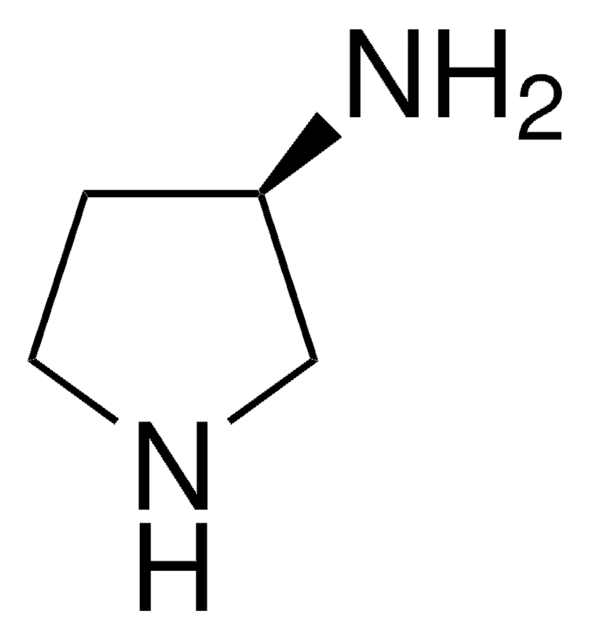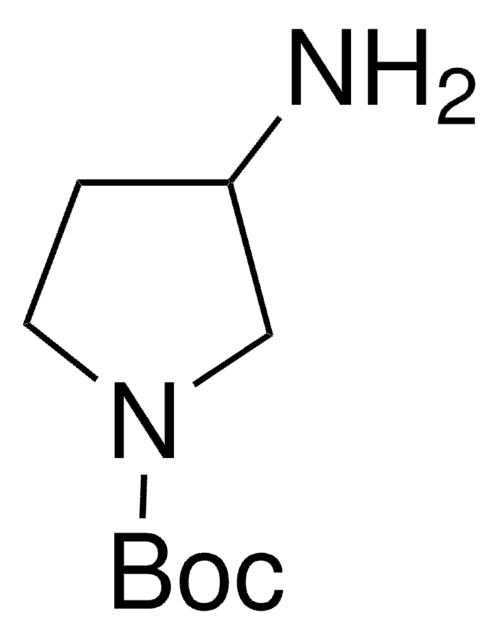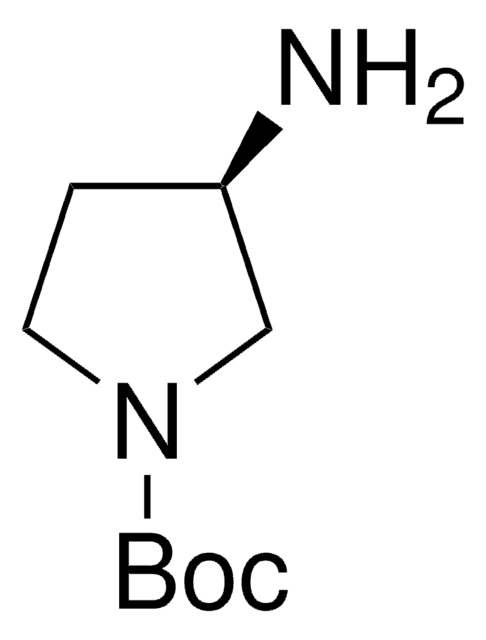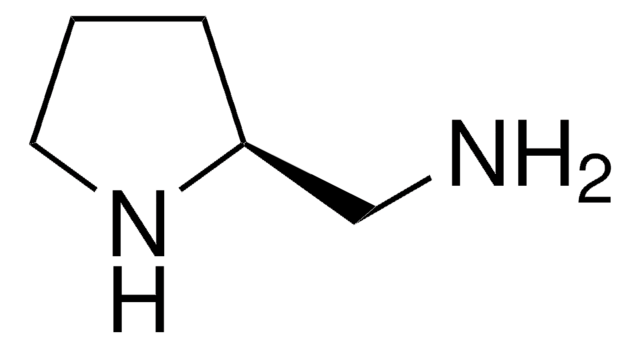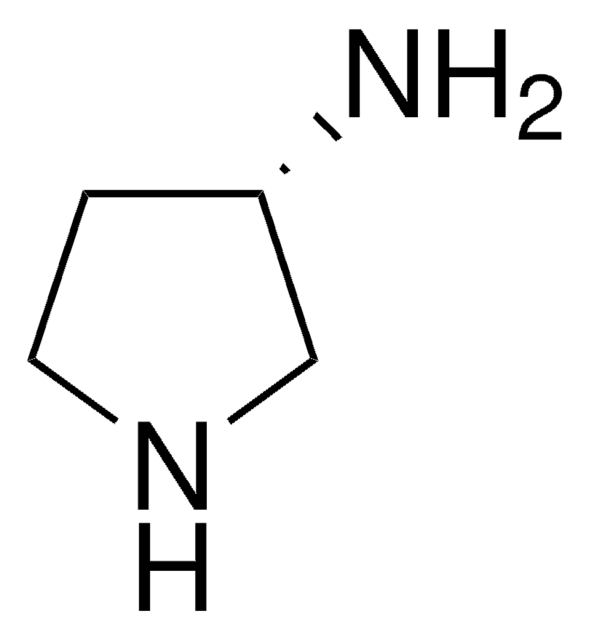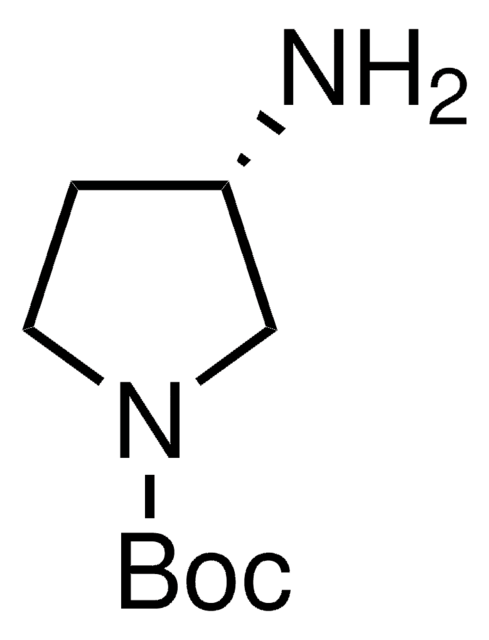All Photos(1)
About This Item
Empirical Formula (Hill Notation):
C4H10N2 · 2HCl
CAS Number:
Molecular Weight:
159.06
MDL number:
UNSPSC Code:
12352100
PubChem Substance ID:
NACRES:
NA.22
Recommended Products
assay
98%
form
solid
mp
>300 °C (lit.)
SMILES string
Cl[H].Cl[H].NC1CCNC1
InChI
1S/C4H10N2.2ClH/c5-4-1-2-6-3-4;;/h4,6H,1-3,5H2;2*1H
InChI key
NJPNCMOUEXEGBL-UHFFFAOYSA-N
Related Categories
General description
3-Aminopyrrolidine dihydrochloride (3-pyrrolidinamine dihydrochloride) is one of the key intermediate of tosufloxacin and other quinolone antibiotics.
Application
3-Aminopyrrolidine dihydrochloride is the suitable reagent used as an internal standard for the quantitative analysis of amino acids in bio-fluids. (R,S) 3-Aminopyrrolidine dihydrochloride may be used in the preparation of cis-[PdCl2(pyrr)] and cis-[PtCl2(pyrr)] (pyrr= (R,S)-3-aminopyrrolidine) complexes.
signalword
Warning
hcodes
Hazard Classifications
Eye Irrit. 2 - Skin Irrit. 2 - STOT SE 3
target_organs
Respiratory system
Storage Class
11 - Combustible Solids
wgk_germany
WGK 3
flash_point_f
Not applicable
flash_point_c
Not applicable
ppe
dust mask type N95 (US), Eyeshields, Gloves
Certificates of Analysis (COA)
Search for Certificates of Analysis (COA) by entering the products Lot/Batch Number. Lot and Batch Numbers can be found on a product’s label following the words ‘Lot’ or ‘Batch’.
Already Own This Product?
Find documentation for the products that you have recently purchased in the Document Library.
Pd (II) and Pt (II)(R, S)-3-aminopyrrolidine complexes. Reactions with 9-ethylguanine and study of their antiproliferative activity.
Riera X, et al.
Inorgorganica Chimica Acta, 339, 253-264 (2002)
Synthesis of 3-Aminopyrrolidine and its N-alkylating Derivatives [J].
Run-pu SHEN, et al.
Journal of Chemical Engineering of Chinese Universities / Gao Xiao Hua Xue Gong Cheng Xue Bao, 4, 014-014 (2003)
Shahlizah Sahul Hamid et al.
Planta, 249(6), 1921-1947 (2019-03-21)
Among seaweed groups, brown algae had characteristically high concentrations of mannitol, and green algae were characterised by fructose. In red algae, metabolite profiles of individual species should be evaluated. Seaweeds are metabolically different from terrestrial plants. However, general metabolite profiles
Jieyu Zhao et al.
Journal of proteome research, 15(2), 468-476 (2016-01-20)
The interaction between carbon (C) and nitrogen (N) metabolism can reflect plant growth status and environmental factors. Little is known regarding the connections between C-N metabolism and growing regions under field conditions. To comprehensively investigate the relationship in mature tobacco
Effects of feed crops and boiling on chicken egg yolk and white determined by a metabolome analysis.
Tatsuki Ogura et al.
Food chemistry, 327, 127077-127077 (2020-06-03)
Compositional analyses of eggs have primarily focused on nutritional components, including large molecules, such as proteins. However, few reports have investigated the effects of heating and hen feed crops on taste components, such as free amino acids and sugars. Herein
Our team of scientists has experience in all areas of research including Life Science, Material Science, Chemical Synthesis, Chromatography, Analytical and many others.
Contact Technical Service